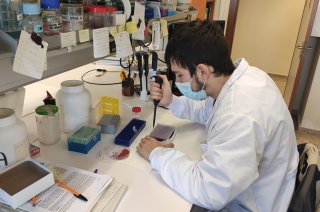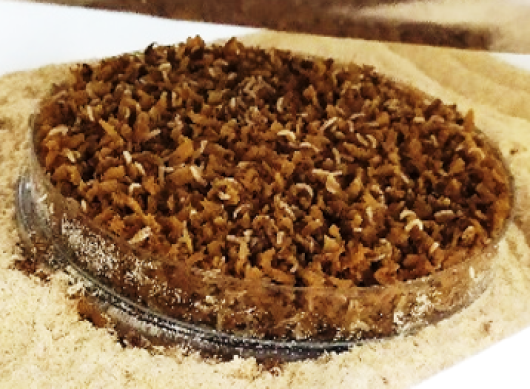
PhD project
Project 8 - Covert infections with RNA viruses in the Mediterranean fruit fly (ES)
Every year, fruit pests including medfly cause serious economic losses worldwide in the agriculture industry. Medflies are mainly counteracted using biological control strategies which require the production of tons of insects with specific characteristics. Unravelling the mechanisms underlying the RNA covert infections in medflies can potentially increase profitability and production capacity of the industry by reducing risks associated with the presence of viral pathogens.
The main aim of the Insect Doctors program is to develop the knowledge, technical skills, and tools to diagnose and manage disease problems in commercial insect production systems. During my Ph.D. project, I will focus on covert infections caused by RNA viruses in Ceratitis capitata, also known as the Mediterranean fruit fly or medfly.
Medfly is a worldwide agricultural pest. Biological control strategies to counteract this pest include the sterile insect technique (SIT; releasing large numbers of sterile males into the field) or the delivery of natural parasitoids of the flies into the field. These strategies rely on the production of tons of insects with specific characteristics, generated by the insect mass-rearing industry.
Covert infections with RNA viruses have been detected in mass-reared medflies and can compromise the success of biological control strategies by a) causing colony collapse on mass-rearing facilities or b) causing detrimental fitness traits on infected flies. Unravelling the mechanisms underlying RNA covert infections in medflies can potentially increase the profitability and production capacity of the industry by reducing risks associated with the presence of pathogens and may increase the mating capacity of the released sterile males.
In this context, I will explore the RNA virome of medfly using Next Generation Sequencing data and bioinformatics approaches. I will also characterize the interaction between RNA viruses and medfly host, with a special interest in fitness traits derived from the presence of covert infections, the molecular mechanism behind covert infections, and the immune response triggered in the host. Finally, I will explore whether the parasitism behaviour of Diachasmimorpha longicaudata, a natural enemy of medfly, is altered by the presence of RNA covert viral infections.
Apart from purely scientific objectives, I aim to convince family and friends that working with insects is worth it and is more relevant for our lives than we could think! Insects are agricultural pests and vectors of disease but also important decomposers, pollinators, a p

